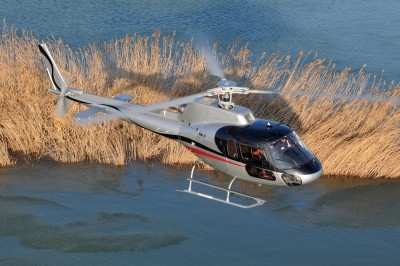Says Pilot Encountered Night IFR Conditions While Avoiding An Obstacle
The pilot of an Airbus AS350B3 medical helicopter en route to pick up a patient on October 22, 2013 in Somerville, TN lost control of the aircraft after flying into night IFR conditions while avoiding an obstacle in his path, according to the NTSB's probable cause report from the accident.

The report indicates that the flight was dispatched to pick up a patient at a hospital and transport him to another hospital near the helicopter’s home base. The pilot performed a weather check, and the flight departed with two medical staff on board. Night, visual meteorological conditions prevailed at the departure helipad. Satellite tracking data revealed that the helicopter proceeded in an easterly direction, following a US highway.
The helicopter then climbed in right-hand turn until the satellite data ended; the helicopter was about 1,116 feet above ground level (agl). The wreckage was found, burning, in a wooded area, about 3,300 feet south of the US highway. No eyewitnesses to the accident were located. The helicopter impacted the trees at a steep angle, and the orientation of the main wreckage was indicative of a loss of helicopter control before impact. The wreckage was largely consumed by a postcrash fire.
Examination of the airframe, rotor system, and engine did not reveal evidence of a preexisting mechanical malfunction of failure. Rotational signatures on the main rotor and engine indicated that the engine was producing power at the time of the accident. The helicopter was equipped with night vision goggles (NVG) and NVG-capable lighting. The pilot had been trained on the use of NVG about 12 months before the accident. The helicopter was not equipped for flight under instrument flight rules. A review of the weather conditions revealed that, at an airport within 2 miles of the accident site, few clouds were observed at 800 feet agl, and a broken ceiling existed at 1,200 feet agl.
A review of the helicopter’s ground track revealed two obstacles in the immediate vicinity, an unlit, nonoperational cellular tower, 140-feet tall, and a water tower, about 115-feet tall. The helicopter was equipped with a Helicopter Terrain Avoidance Warning System (HTAWS). Although recorded HTAWS data was not available, research and flight testing revealed that the pilot may have received an in-flight obstacle alert, prompting a climb. Considering the low clouds and night conditions that probably existed along the last segment of the flight’s track, it is likely that the pilot initiated a climb and inadvertently entered instrument meteorological conditions, where a loss of helicopter control occurred.
The National Transportation Safety Board determined that the probable cause of this accident to be the pilot’s inadvertent encounter with night, instrument meteorological conditions while responding to an obstacle alert, resulting in an in-flight loss of helicopter control.
(Image from file. Not accident aircraft)
 NTSB Prelim: Piper PA-23
NTSB Prelim: Piper PA-23 ANN FAQ: Submit a News Story!
ANN FAQ: Submit a News Story! Classic Aero-TV: One Mans Vietnam
Classic Aero-TV: One Mans Vietnam ANN's Daily Aero-Linx (07.03.25)
ANN's Daily Aero-Linx (07.03.25) ANN's Daily Aero-Term (07.03.25): High Speed Taxiway
ANN's Daily Aero-Term (07.03.25): High Speed Taxiway



